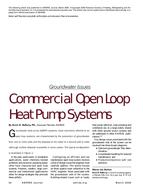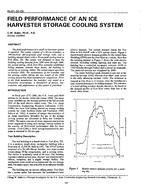Click here to purchase
In order to reduce energy consumption while maintain high indoor air quality (IAQ), CO2-based Demand controlled ventilation (DCV) has beeninvestigated a lot and become trend of the future ventilation system. Among different advanced sensors, the real-time occupancy estimation (people counting)sensor has played an important role in CO2-based demand control ventilation (DCV) systems. However, since particle diffusion indoors is slower thandynamic changes of occupant presence in transient conditions, the actual CO2 concentration will generally lag behind actual number of occupants whiledynamic infiltration may mitigate the lag effect. Therefore, simulations were conducted in this paper to provide insight into the application of occupancyestimation sensors for CO2-based DCV and dynamic infiltration in the real world. Two different stochastic occupancy profiles for two different space typeshave been investigated, which were generated based on Markov-chain model and Gaussian model with high variance, respectively. It has been observed thatdue to the lag effect, the actual CO2 concentration with Gaussian occupancy model is more likely to exceed the set-point value than that with Markov-chainoccupancy model. Fortunately, the simulation results showed that dynamic infiltration owing to dynamic operation of building envelopes such as operablewindows eliminated the lag effect. Therefore, for the space with variant occupancy profile, it is suggested to operate DCV by integrating the system withdynamic operations of building envelopes in order to improve the indoor air quality.
Citation: 2019 Winter Conference, Atlanta, GA, Conference Papers
Product Details
- Published:
- 2019
- Number of Pages:
- 8
- Units of Measure:
- Dual
- File Size:
- 1 file , 1.2 MB
- Product Code(s):
- D-AT-19-C068


